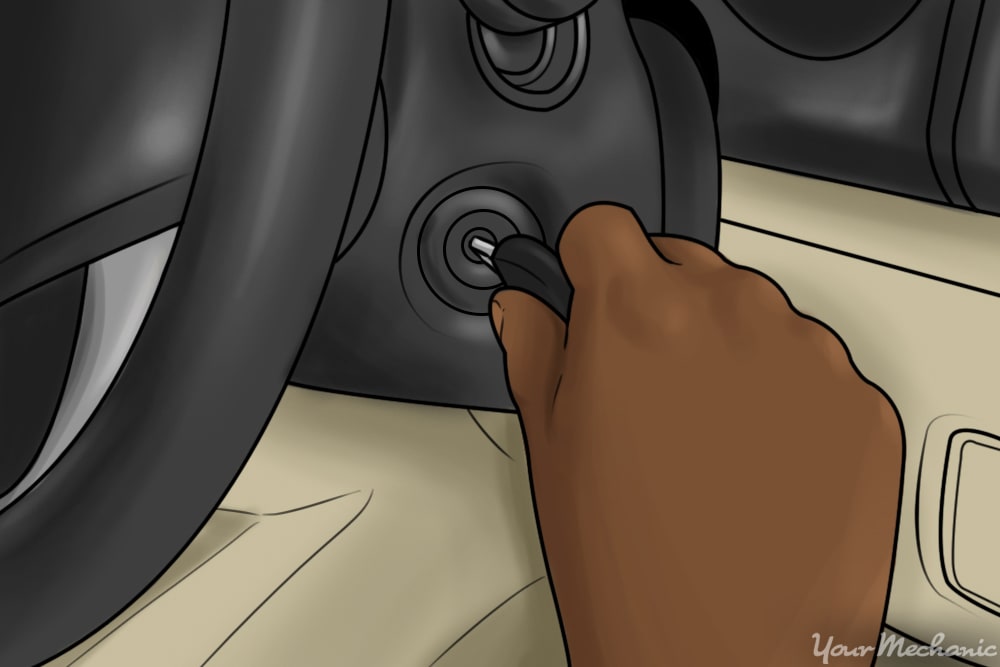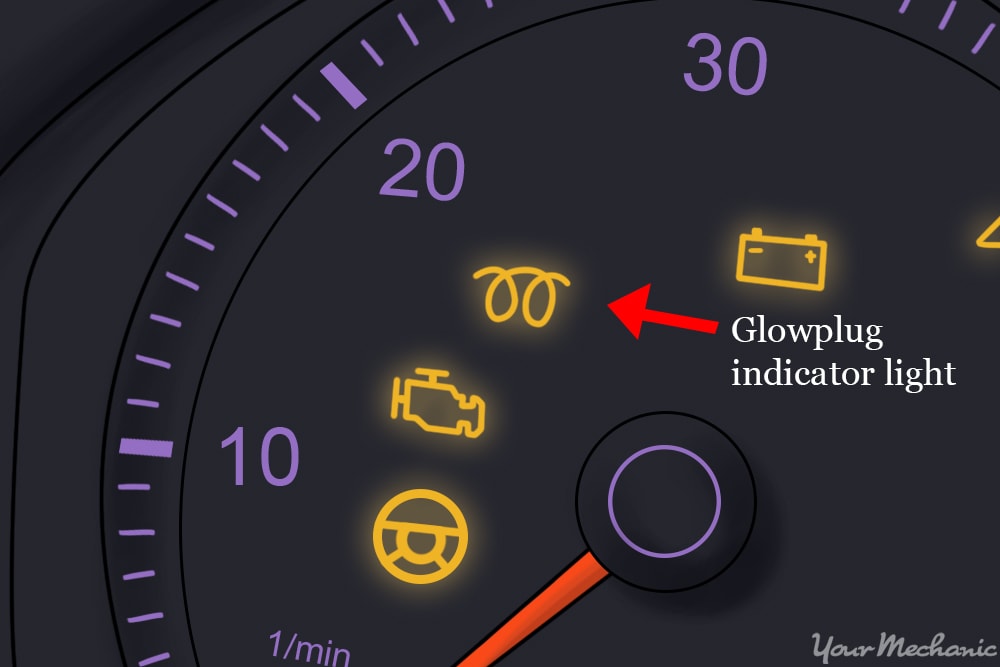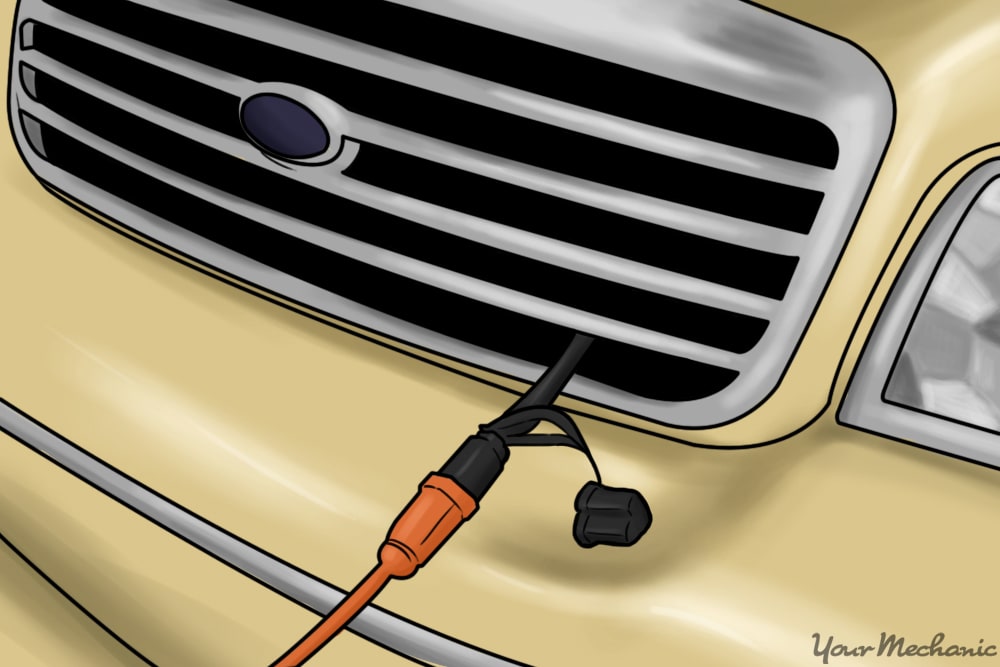

Starting a diesel engine is a lot different than starting a gas-powered engine. Whereas a gas engine starts when the fuel is ignited by the spark plug, diesel engines rely on the heat created by compression in the chamber. Sometimes, such as during cold weather, the diesel fuel needs the aid of an outside source of heat to reach the appropriate temperature to start. When starting a diesel engine, you have three basic ways of doing so: using an intake heater, using the glow plugs, or using the block heater.
Method 1 of 3: Using an intake heater
One way to start a diesel engine is using air intake heaters, which sit within the intake manifold and heat the air as it is drawn into the engine cylinders. Receiving its power directly from the vehicle's battery, an intake heater is a great way to get the air temperature in the combustion chamber where it needs to be quickly, allowing you to start the diesel engine when you need to, with the added benefit of doing away with white, gray, or black smoke often produced by a cold engine startup.
Step 1: Turn the key. Turn the ignition key to begin the diesel-engine-starting process.
The glow plugs are still used in this starting method, so you need to wait for them to warm up before the vehicle can start properly.
The air intake heater is meant to get the air entering the combustion chambers up to normal operating temperature quickly.
Step 2: Turn the key again and start the engine. The air intake heaters use the power produced by the battery when starting to heat the element installed in the air intake pipe.
As the vehicle starts and the air is drawn across the heated elements, it enters the combustion chambers warmer than without the aid of the air intake heaters.
This helps reduce or eliminate the white or gray smoke commonly produced upon startup of a diesel engine. This condition is caused when diesel fuel makes it through the combustion process unburnt and is the result of a combustion chamber that is too cool, causing lower compression.
Method 2 of 3: Using the glow plugs
The most common method for starting a diesel engine is through the use of glow plugs. Like an air intake heater, the glow plugs operate off of the power of the vehicle's battery. This pre-warming process brings the air in the combustion chamber up to a temperature conducive to cold starting.
Step 1: Turn the key. The “Wait To Start Light” should appear on the dash.
The glow plugs can take up to 15 seconds to warm up, or longer during cold weather.
When the glow plugs reach their normal operating temperature, the “Wait To Start” light should go out.
Step 2: Start the engine. Once the “Wait To Start” light goes out, attempt to crank the engine.
Do not attempt to start the vehicle for more than 30 seconds. If the vehicle starts, let go of the key. Otherwise, turn the key to the off position.
Step 3: Heat the glow plugs again. Turn the key until the Wait To Start light comes on again.
Wait for the light to go off, indicating that the glow plugs are heated sufficiently. This can take up to 15 seconds or longer, depending on the temperature.
Step 4: Attempt to start the vehicle again. Once the “Wait To Start” light has gone out, attempt to start the vehicle again.
Turn the key to the start position, cranking the engine for no more than 30 seconds. If the vehicle fails to start, turn the key to the off position and consider other options, such as using a block heater.
Method 3 of 3: Using the block heater
If both the glow plugs and air intake heater fail to get the air in the combustion chamber warm enough to start, you should consider using a block heater. Just like the glow plugs heat the air within the combustion chamber and the air intake heater warms the air as it enters the intake manifold, a block heater heats the engine block. This facilitates diesel engine starting in cold weather conditions.
Materials Needed
- Outlet plug
Step 1: Plug in the block heater. This step requires you to extend the block heater plug out the front end of the vehicle.
Some models have a port that you can thread the plug through; otherwise, place it through the front grille. Using an extension cord, plug the vehicle into an available outlet.
- Warning: Most block heater plugs have three prongs and require an appropriate extension cord connection.
Step 2: Leave the block heater plugged in. Allow the truck to sit, plugged in for at least two hours before starting.
The block heater warms the coolant in the engine block, which helps to warm the whole engine.
Step 3: Start the engine. Once the coolant and engine have warmed enough, attempt to start the vehicle as detailed above.
This includes waiting for the “Wait To Start” light to go off, which could take up to 15 seconds or longer, depending on the temperature within the combustion chamber. After the “Wait To Start” light has gone out, attempt to crank the engine, but for no more than 30 seconds.
If the engine still fails to start, seek the help of an expert diesel mechanic, as your problems are most likely something else.
Starting a diesel engine can sometimes prove difficult, especially in cooler weather. Luckily, you have some options when it comes to getting the temperature in the combustion chamber warm enough to start the vehicle. If you encounter any problems when starting your diesel truck, or just have general questions, Ask a Mechanic to find out what you can do to make starting your diesel truck easier.





